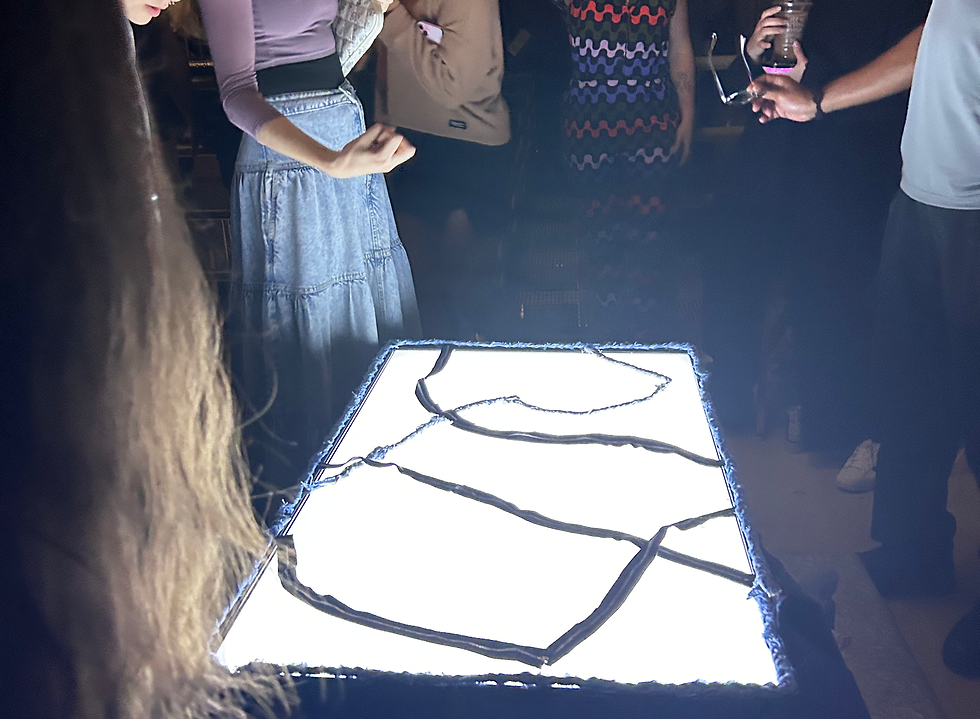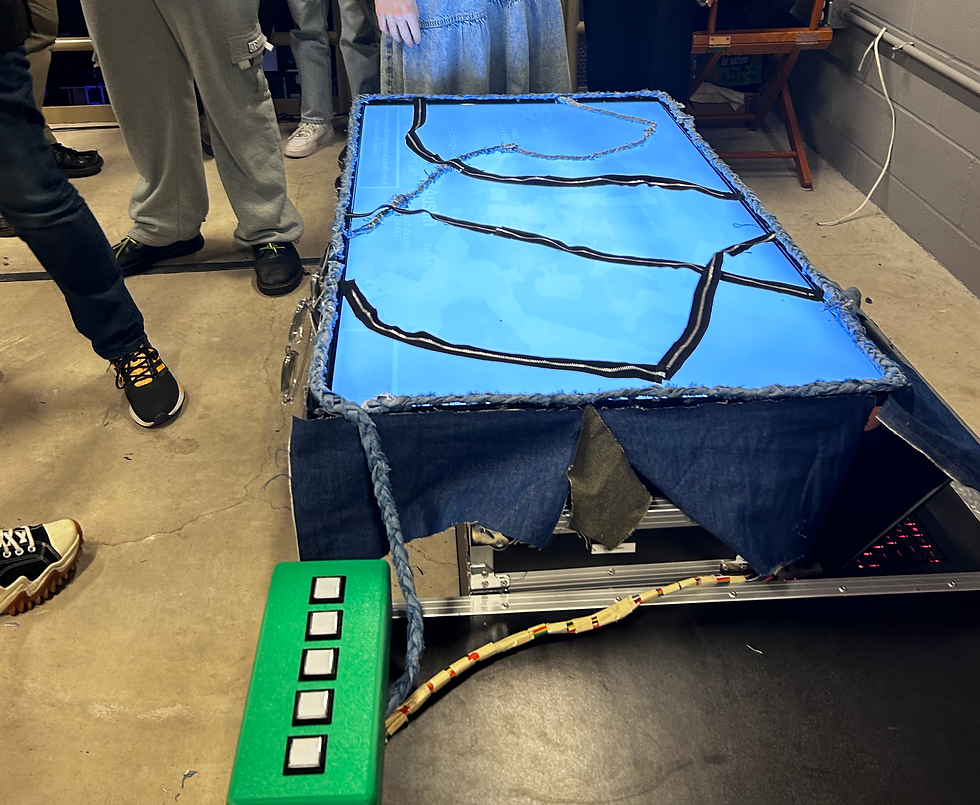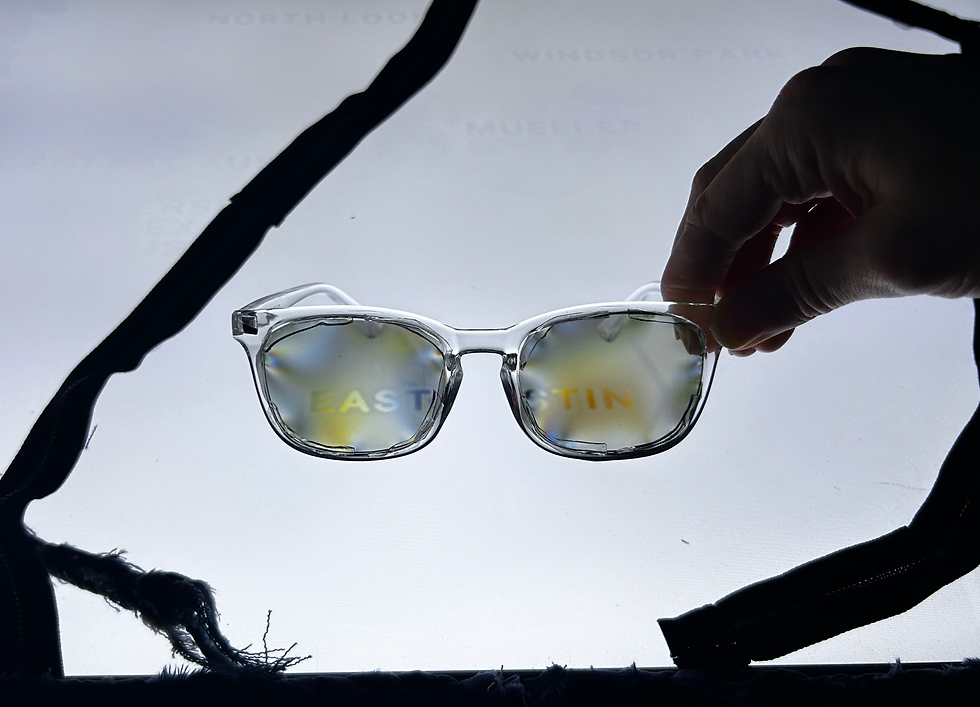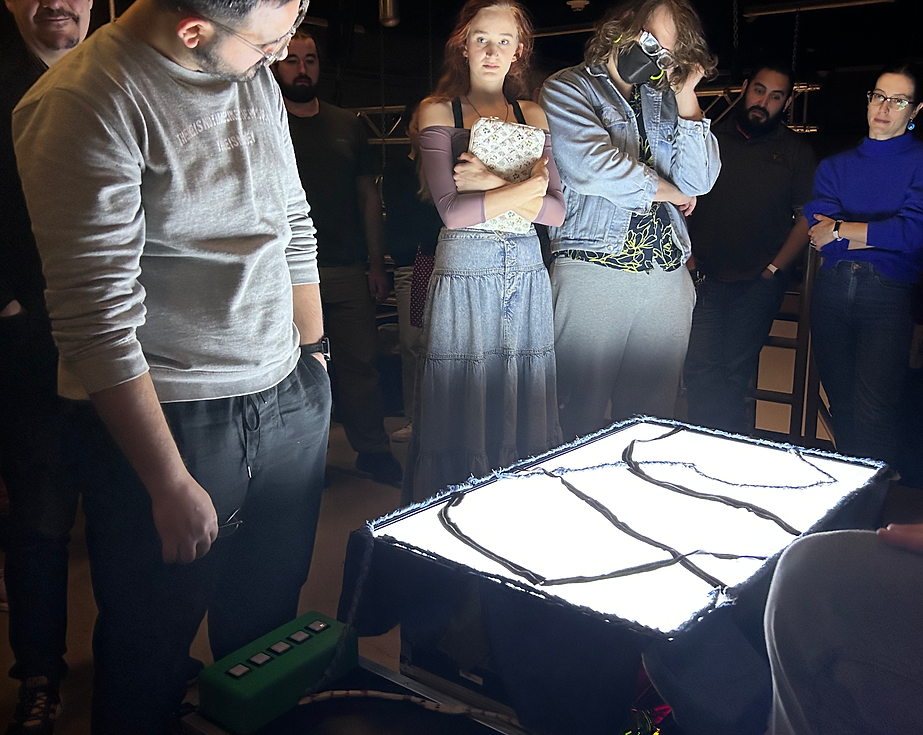Gentrivision is an interactive installation that transforms an old television into a critical tool for viewing gentrification in Austin, Texas. By stripping the polarizing film from the LCD display and embedding time-based data visualizations into wearable glasses, the piece makes demographic shifts—across age, race, gender, income, and employment—visible only through embodied interaction. Viewers must engage physically to witness these changes, questioning what is made visible or invisible in narratives of urban development and displacement.
GENTRIVISION | Experimental Data Installation






Gentrivision investigates how gentrification is both visible and hidden—depending on where you stand. A familiar object of passive consumption, the TV is reimagined as an active, selective viewing device. Audiences wear glasses and use physical controls to navigate through demographic data over time, turning the act of seeing into a deliberate and political gesture. The piece highlights the slow, often overlooked violence of urban transformation, challenging viewers to consider whose realities are amplified and whose are ignored.
The installation was built using an upcycled LCD television, from which the polarizing film was removed to create a selective viewing mechanism. Custom electronics were integrated using an Arduino microcontroller and physical buttons to allow viewers to navigate different data layers. Data visualizations—generated with TouchDesigner and refined in After Effects—were embedded into transparent display films visible only through custom-designed glasses. The buttons and glasses were housed in 3D-printed components. The visual content was based on publicly available demographic and urban data from sources including the City of Austin Open Data Portal, Census Reporter, and the U.S. Census Bureau.
This work was created in collaboration with Whitney Mosery, Nitsan Sharf, AJ Hurtado, and Sarah Jean Elliott.
Gentrivision is an interactive installation that transforms an old television into a critical tool for viewing gentrification in Austin, Texas. By stripping the polarizing film from the LCD display and embedding time-based data visualizations into wearable glasses, the piece makes demographic shifts—across age, race, gender, income, and employment—visible only through embodied interaction. Viewers must engage physically to witness these changes, questioning what is made visible or invisible in narratives of urban development and displacement.
Gentrivision investigates how gentrification is both visible and hidden—depending on where you stand. A familiar object of passive consumption, the TV is reimagined as an active, selective viewing device. Audiences wear glasses and use physical controls to navigate through demographic data over time, turning the act of seeing into a deliberate and political gesture. The piece highlights the slow, often overlooked violence of urban transformation, challenging viewers to consider whose realities are amplified and whose are ignored.
The installation was built using an upcycled LCD television, from which the polarizing film was removed to create a selective viewing mechanism. Custom electronics were integrated using an Arduino microcontroller and physical buttons to allow viewers to navigate different data layers. Data visualizations—generated with TouchDesigner and refined in After Effects—were embedded into transparent display films visible only through custom-designed glasses. The buttons and glasses were housed in 3D-printed components. The visual content was based on publicly available demographic and urban data from sources including the City of Austin Open Data Portal, Census Reporter, and the U.S. Census Bureau.
This work was created in collaboration with Whitney Mosery, Nitsan Sharf, AJ Hurtado, and Sarah Jean Elliott.
GENTRIVISION | Experimental Data Installation







